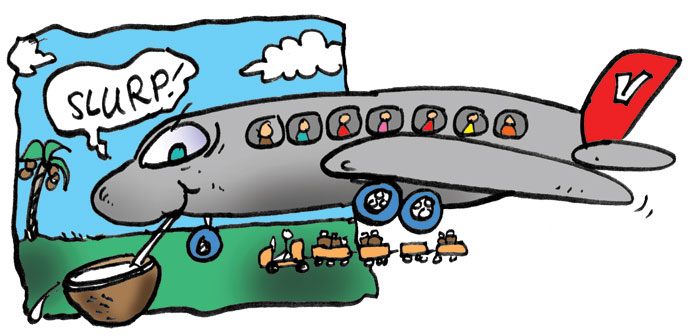Editors note: Elsewhere provides news from around the globe on new uses for agricultural products. Please note that ARS is the research arm of USDA.
Surfin’ on soy
Beach bums may be catching their next wave on soyboards. Homeblown, a San Diego company, produces surfboards with Biofoam, plastic foam made with up to 50 percent ag products, including soy. The soy foam exhibits superior hardness and has a finer, more uniform cell structure than petroleum foam. The technology used to make surfboards is also used for architectural models, insulation and other foam products.
From: Biobased Solutions
January 2008
Power-packed cranberry
Soon heaping extra cranberry relish on your Thanksgiving dinner plate could make your holidays healthier. USDA-ARS researchers are crossing several cranberry varieties to produce fruit with more anthocyanins, chemicals high in antioxidants. Cranberry hybridization started only recently. The new varieties are not yet commercially available.
From: USDA-ARS
January 8, 2008
Virgin Atlantic has carried out the world’s first flight of a biofuel-powered commercial aircraft to show it can produce less carbon dioxide than normal jet fuels. The February 24 Boeing 747 flight from London to Amsterdam carried only pilots and several technicians who are analyzing emissions data. The biofuel was made partially from coconut and babassu oil.
From:Soyatech.com
February 25, 2008
A shot of rice
A Japanese research team has developed cholera vaccine from rice that is genetically altered to include cholera bacteria protein. Led by researchers at the University of Tokyo’s Institute of Medical Science, the method for impregnating rice with protein could be used with other bacteria to create more edible vaccines.
From: BiobasedNews.com
February 22, 2008
Buzz off
While many pesticides are toxic to insects and humans, a molecular pesticide developed by ARS scientists may deter mosquitoes and other pests without risking human health. Nucleic acid, the molecular pesticide’s active ingredient, allows scientists to target and interrupt genes essential to the insect’s survival. Chemical pesticides often impact physiological systems shared by humans and pests. The new technology only targets pest genes.
From: USDA-ARS
December 20, 2007
While hops may be best known for their beer-brewing role, their value is expanding. Because of their natural anti-microbial properties, hops are being used more in sugar processing, tea and animal feed. Oregon ARS researchers have developed a new hop variety with an extremely favorable acid profile. It could potentially replace formalin in sugar processing and antibiotics in animal feeds.
From: USDA-ARS
January 3, 2008
Healthy paint
 City College of New York and Rice University researchers have developed a technique for producing antimicrobial paints that could help hospitals, homes and offices fight germs. The nontoxic, vegetable oil-based paints are embedded with antimicrobial silver nanoparticles to curb bacterial growth — the main cause of infection and disease.
City College of New York and Rice University researchers have developed a technique for producing antimicrobial paints that could help hospitals, homes and offices fight germs. The nontoxic, vegetable oil-based paints are embedded with antimicrobial silver nanoparticles to curb bacterial growth — the main cause of infection and disease.
From: BiobasedNews.com, February 22, 2008
Editors note: Elsewhere provides news from around the globe on new uses for agricultural products. Please note that ARS is the research arm of USDA.


